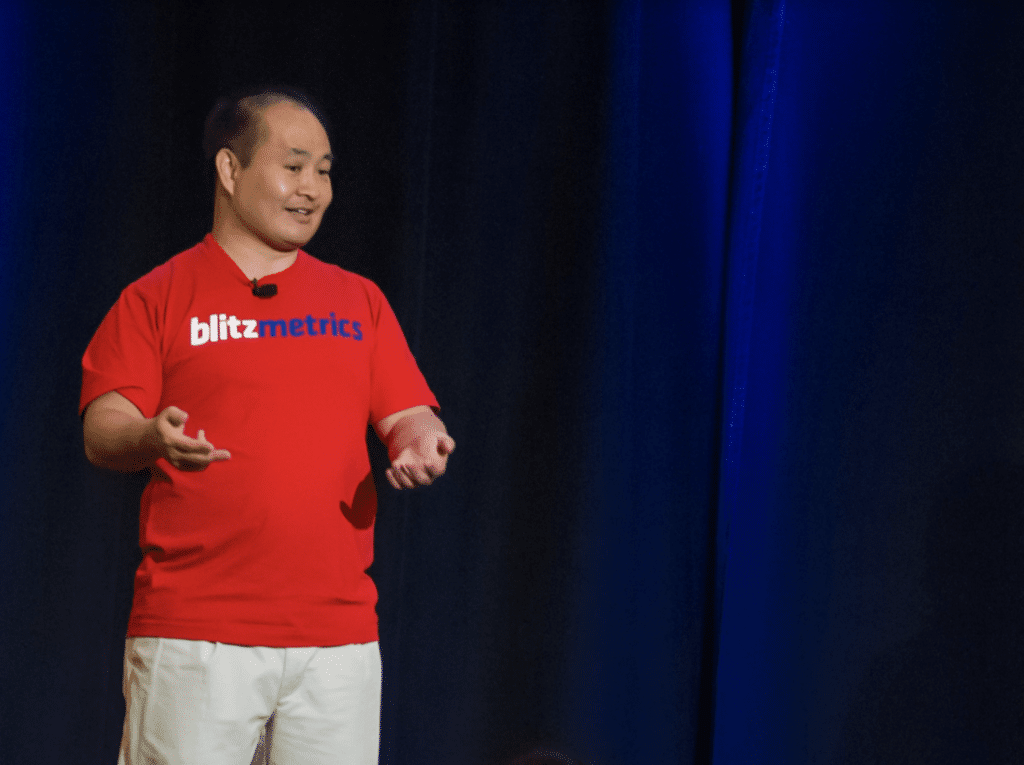The world of marketing and advertising has evolved rapidly in the digital era, where consumers are more informed than ever before. Demand generation, a combination of marketing tactics, strategies, and programs aimed at creating awareness and driving interest in a product or service, has become a critical aspect of the sales process. The ultimate goal of demand generation is to fuel the sales pipeline, shorten the sales cycle, and generate revenue by delivering the right information to the right people at the right time.
Dennis Yu, a renowned social marketing expert, has developed a groundbreaking strategy called “Dollar-a-Day” that has already made him famous in the world of Facebook marketing.
The strategy, as the name suggests, doesn’t require businesses to spend a fortune advertising on social media to generate significant ROI. Instead, the strategy involves testing your content for $1/day to determine which posts perform best and then scaling up ad spend on the best performers.
The process starts with boosting a post for seven consecutive days, followed by Dennis’ benchmarks for killing and keeping posts. The idea is to kill 90% of the posts that don’t perform well and add $30 for 30 more days if the posts perform well. The next step is to identify the “unicorn posts” by testing new audiences and higher budgets.
Once you’ve identified your unicorn posts, you can throw more money on them as the return on ad spend is worth it, provided you don’t hit more than 10% of the available audience.
Dennis’ strategy is simple and easy to follow, as long as you document your process and develop “repeatable excellence.” Taking notes, creating checklists, and following them can help replicate the tested success. The strategy works equally well on Twitter and Facebook, as the lower quality of traffic on Twitter is offset by the lower cost of ad spend.
The “Dollar-a-Day” strategy allows businesses to test their content at a low cost and scale up to the limit of the available demand they can profitably sell to. The strategy is particularly useful for short snippets of text and video organized into three pieces: “WHY” (top of the funnel), “HOW” (middle of the funnel), and “WHAT” (bottom of the funnel).
The dollar-a-day strategy is a cost-effective approach to demand generation marketing that involves spending a small amount of money on advertising each day to drive traffic to a website or landing page.
By spending just a dollar a day on advertising, companies can reach a large number of potential customers and generate leads that can be nurtured into paying customers. This strategy is especially effective for small and medium-sized businesses that may not have the budget to spend on expensive advertising campaigns.

The dollar-a-day strategy leverages the power of online advertising platforms, such as Google Ads and Facebook Ads, to reach potential customers. By targeting specific demographics, interests, and behaviors, companies can ensure that their advertising is reaching the right people. Additionally, by setting a daily budget, companies can control their spending and avoid overspending on advertising.
This makes the dollar-a-day strategy a low-risk, high-reward approach to demand generation marketing.
Once the traffic is generated, companies can use landing pages and lead magnets to capture the contact information of potential customers. This information can then be used for lead nurturing, email marketing, and other tactics to build relationships and move prospects through the sales funnel.
The use of paid media to drive awareness and generate demand for a new brand or product. This strategy can be effectively used on Facebook, Twitter, and TikTok by following these examples:
Facebook: Use Facebook’s targeting options to reach your target audience with relevant advertisements. Use eye-catching images, videos, and captions to create interest and drive engagement.
Twitter: Utilize Twitter’s paid advertising options to reach your target audience with short, attention-grabbing messages. Create Twitter ads that promote your brand, product, or service with compelling visuals, and engage with users who interact with your ads.
TikTok: Utilize TikTok’s paid advertising options to reach your target audience with visually appealing, short-form video ads. Create content that showcases your product in a fun and creative way, using TikTok’s unique features, such as filters and effects, to make your ads stand out.
By focusing on converting a small percentage of the traffic generated through the dollar-a-day strategy, companies can see a significant return on their investment.
Relevance and engagement are two critical components of any effective demand generation campaign. The more relevant your content is to your target audience, the more likely it is that they will engage with it and, eventually, convert into paying customers. The key to creating relevant and engaging content is to understand your target audience and their pain points. This requires extensive research and data analysis, as well as ongoing testing and optimization.
To create content that engages your target audience, you need to understand what motivates them and what type of content they are most likely to respond to. For example, if your target audience is primarily composed of younger adults, then using humor and visually appealing content is likely to be more effective than using a dry, data-driven approach. On the other hand, if your target audience is primarily composed of older adults, then a more straightforward, educational approach may be more effective.
Visuals play a critical role in capturing attention and driving engagement. In today’s fast-paced, digital world, people are bombarded with an endless stream of information, and it’s essential to stand out from the crowd if you want to generate demand for your brand or product. Using eye-catching images, videos, and other visuals can help you capture the attention of your target audience and drive engagement.
For example, using a mix of high-quality images, videos, and infographics can help you tell your brand’s story in an engaging and compelling way. You can also use animations, GIFs, and other interactive elements to add another layer of engagement and make your content stand out.
The “dollar-a-day strategy” emphasizes the use of paid media to drive awareness and generate demand for a new brand or product. Paid media can be a powerful tool for reaching your target audience and getting your content in front of them. For example, Facebook and Twitter both offer paid advertising options that allow you to target your ads to your target audience based on their interests, behaviors, and other characteristics.
TikTok also offers paid advertising options, and its unique short-form video format is perfect for capturing the attention of younger audiences. By using TikTok’s filters and effects, you can create visually appealing, attention-grabbing ads that stand out from the crowd.
One of the key benefits of the “dollar-a-day strategy” is that it leverages the unique features of each social media platform to reach your target audience in the most effective way possible. For example, on Facebook, you can use targeting options to reach your target audience with relevant advertisements. On Twitter, you can use short, attention-grabbing messages to engage with your target audience. On TikTok, you can use visually appealing, short-form video ads to capture the attention of younger audiences.
The final step in the “dollar-a-day strategy” is to measure your results and optimize your campaign based on the data you collect. This includes tracking key metrics such as impressions, clicks, conversions, and engagement rates. By analyzing this data, you can determine what is working and what is not, and make the necessary changes to improve your results over time.
In conclusion, the “dollar-a-day strategy” is an effective way to drive awareness and generate demand for a new brand or product. By leveraging the unique features of each social media platform, creating relevant and engaging content, and measuring your results, you can generate demand and drive engagement with your target audience through paid media.
The strategy can also be scaled up over time as the business grows and more resources become available for marketing and advertising efforts.










